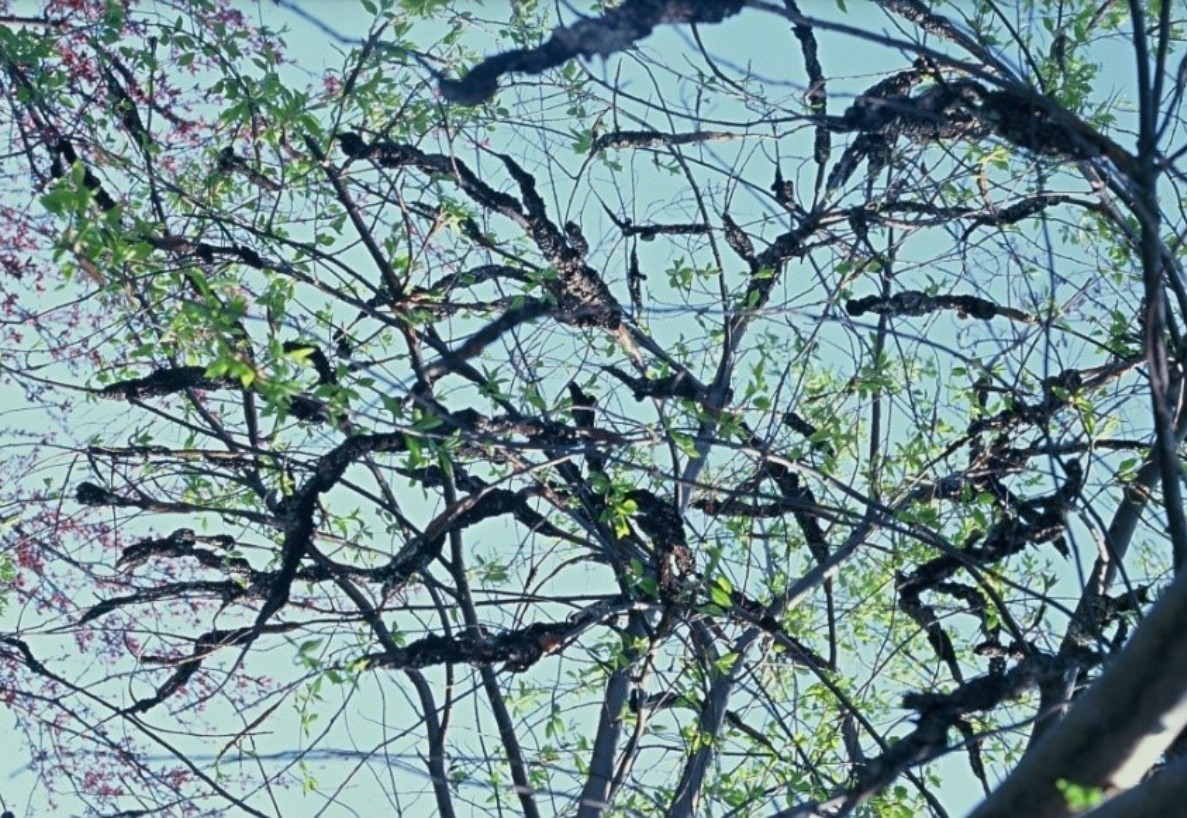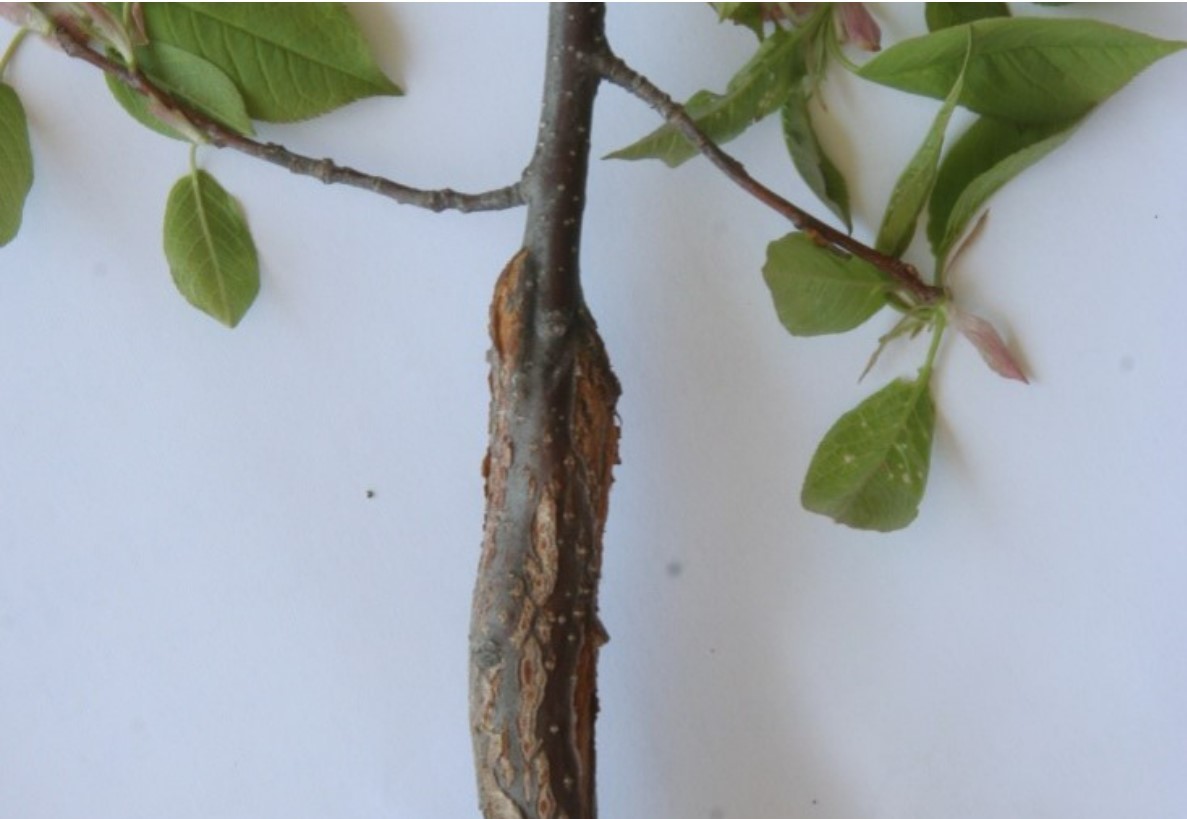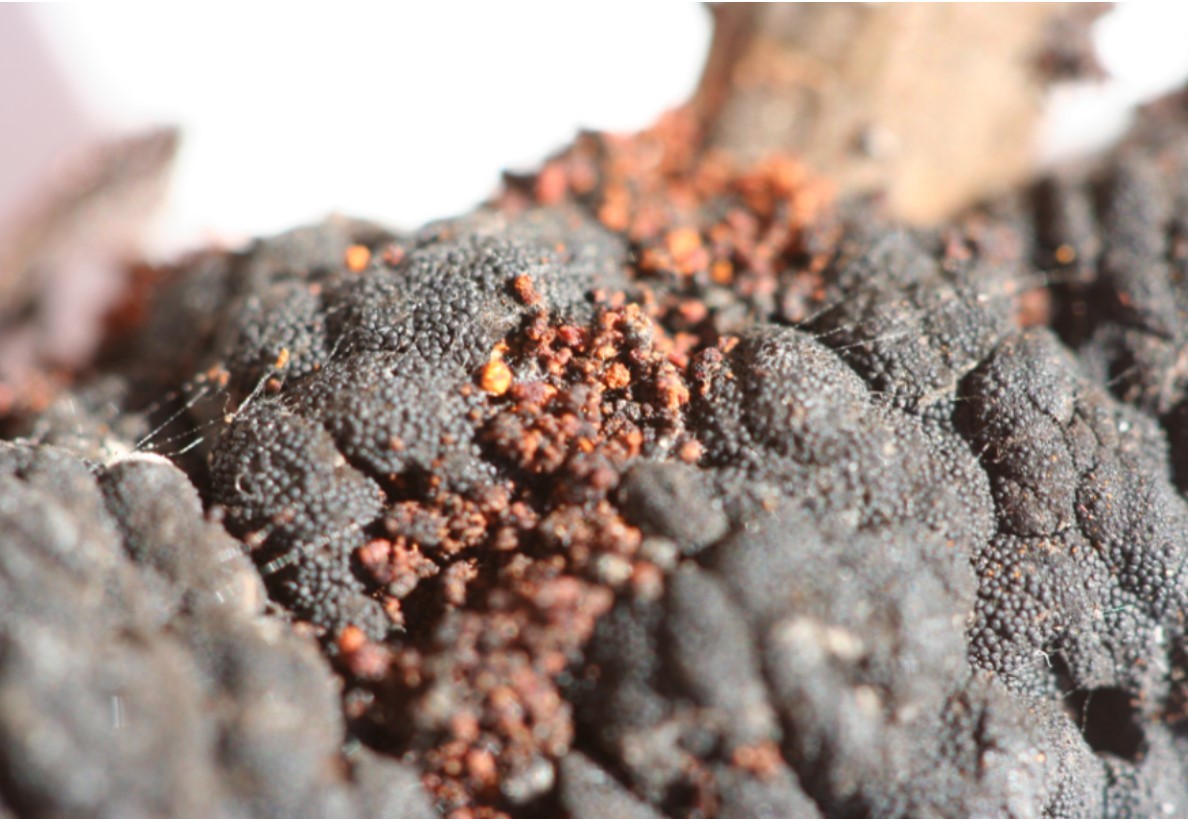Is your Mayday, Chokecherry or Lilac showing a black, lumpy growth on its branches? It may be infected with black knot fungus – a disease that affects Prunus family trees. If left unchecked, it will affect the health of your tree. It can eventually be fatal.
Sign and Symptoms
This fungal condition infects only Prunus species of plants, and may be recognized by the clumpy-looking, black masses of abnormal growths on the branches of your cherry trees.
Initially, a small olive-green gall or swelling at a succulent growing point or fruit spur. The knot will grow until it is mature in 2-3 years. The mature galls are black and hard. Mature galls release spores into the air resulting a future infection on the same tree and adjacent trees.
The fungus continues to grow and the branch eventually becomes girdled and dying.
Prevention
Watering & Fertilizing
- Your trees can be kept healthy by watering and fertilizing. Click here to learn more about watering.
Control - What you can do by yourself
Pruning
- Prune off infected branches 2-4 inches below each “knot”
and dispose of them in a landfill. - Between each cut, sanitize your tools with a bleach water solution (25% bleach, 75% water).
- The best time to prune is during late winter, as the fungus is dormant and the abnormal “knotty” growths are easy to see.
- Avoid pruning in the spring when the fungus is active.
- The fungus is transported by spores so the proper sanitization of pruning tools is very important to limit its spread from plant to plant.



Tree Health Issues
Wondering about costs?

